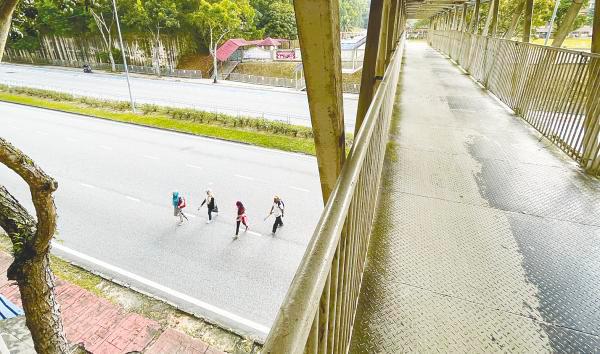PETALING JAYA: About 500 pedestrians are killed each year while crossing roads, making them the third leading cause of road-related deaths, and trailing behind motorcycle and motorcar crashes.
Universiti Putra Malaysia Road Safety Research Centre professor Dr Law Teik Hua said the statistics also show that a considerable number of such victims are senior citizens in the 70 to 80 age group while 40% involved children aged six to 10.
“The primary contributing factors include them not using designated zebra crossings and overhead bridges despite heavy traffic. Another reason is negligent drivers.
“Adding to the complexity, the shorter and smaller stature of children makes them less visible to drivers, further raising the inherent risks on the roads.”
Law said despite the construction of overhead bridges at specific high-traffic roads, the public continue not to use them, particularly in hotspots in city centres and between corporate buildings.
He said one reason is that the use of stairs or ramps could be challenging for individuals with mobility issues and bicycle riders.
“There are also safety concerns when poorly lit or isolated bridges contribute to feelings of unease.”
Law said boosting the use of overhead bridges requires the implementation of targeted interventions, such as designing bridges with features like elevators, ramps, and spacious pathways.
“Pedestrians can be encouraged to use overhead bridges if adequate lighting, surveillance cameras, and emergency call boxes are installed to address their crime and personal security concerns.
“Furthermore, prioritising efficient design and routing ensures that the overhead bridges offer the most direct and convenient paths that minimise detours.”
Law also said launching public awareness campaigns that highlight safety, convenience, and accessibility is essential, adding that pedestrians should be educated about ensuring their safety vis-a-vis traffic considerations.
“The authorities should enforce traffic laws that prioritise pedestrian safety, implement pedestrian-friendly measures like signal timing, and integrate overhead bridges into urban planning to create a more cohesive environment.”
Law said accessibility of overhead bridges for persons with disabilities (PwDs) depends on the quality of their design and maintenance. Ideally, these structures should allow PwDs to navigate them safely and independently.
He pointed out the presence of staircases in nearly every overhead bridge, and questioned if the designers considered PwDs and the problems they would face in using them.
“While some overhead bridges may accommodate PwDs who can walk with assistance, there remains a significant gap for those on wheelchairs or experiencing difficulties ascending stairs.
“This calls for a comprehensive re-evaluation of design standards to ensure universal accessibility.”
Law said neglecting overhead bridge accessibility for PwDs raises the risk of accidents involving them, and eventually forcing them into considering expensive transport alternatives, which adds to their financial burden.
“By investing in inclusive design and addressing the unique challenges faced by them, the government can contribute to creating a more equitable and accessible urban environment for all citizens,” he said.









